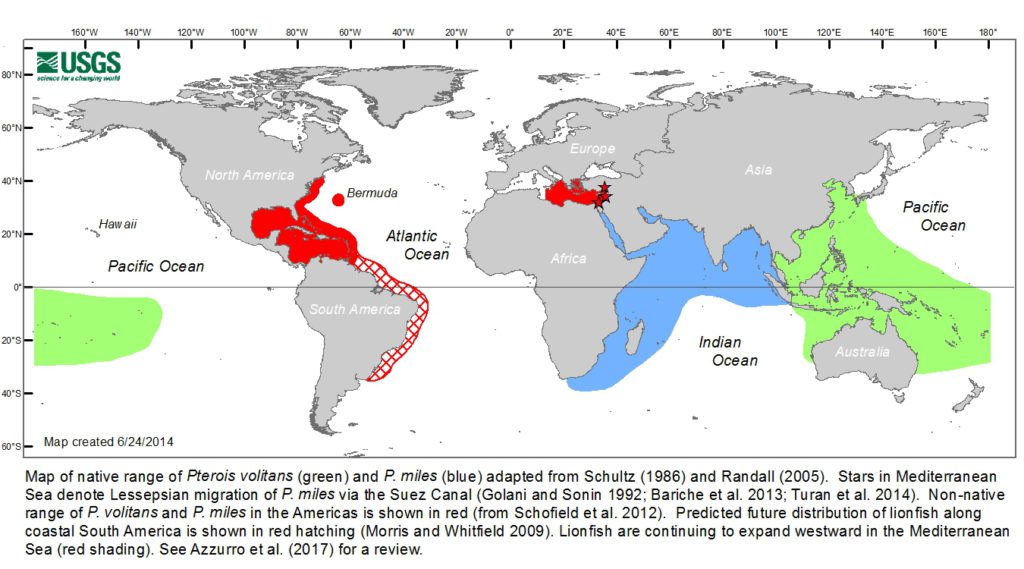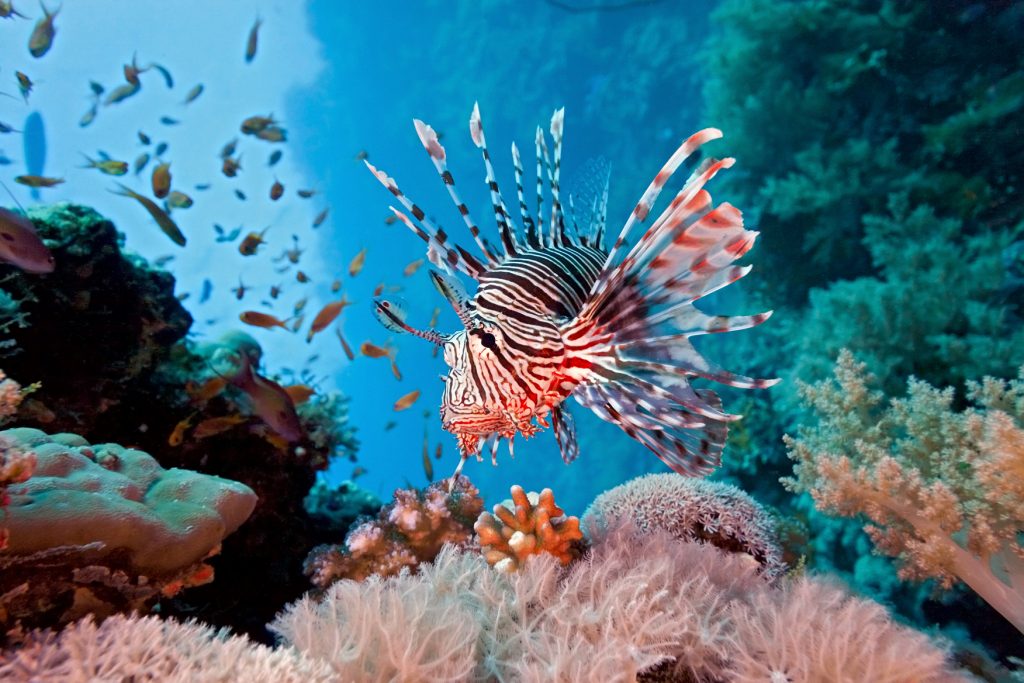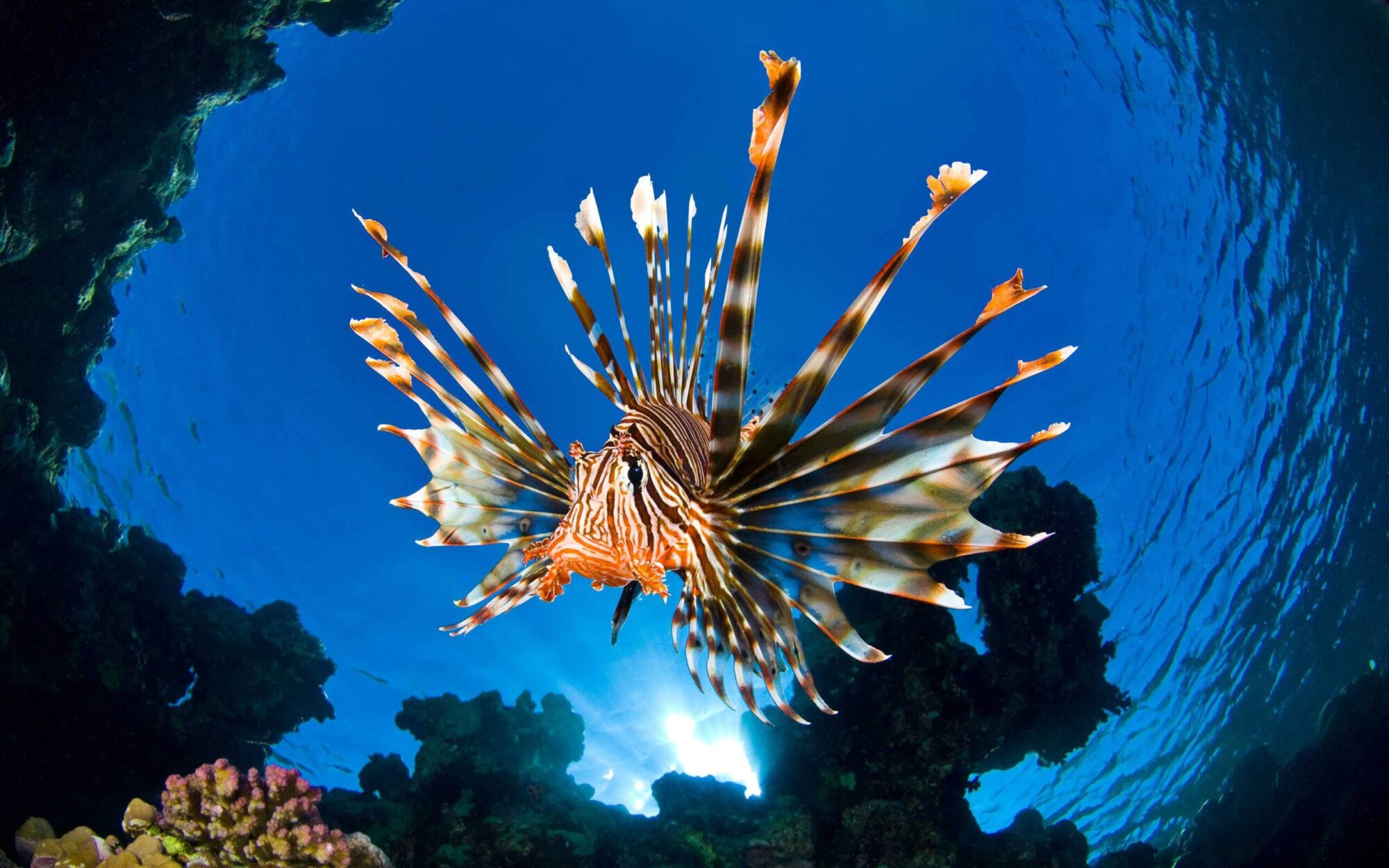The Lionfish Invasion in the Mediterranean Sea
The Mediterranean Sea is known for hosting a plethora of marine wildlife, of which the survival depends on familiarity and an unchanging environment. Imaginably, the introduction of the invasive lionfish into the Mediterranean disrupts the ocean ecosystem and can yield disastrous effects. The lionfish is a known hunter species, under the genus of Pterois, and is known to be native to the Indo-Pacific region. They have red and brown stripes around their body, and numerous spines and fins that are venomous. Not only are they capable of harming fish, but also human swimmers as well.
How Did Lionfish Get To The Mediterranean Sea?
In the 1980’s, lionfish were accidently released from an aquarium in Florida into the Atlantic ocean. Since lionfish do not have a natural enemy outside of their native region, they were able to survive and grow. In 2013, scientists first started to notice the Red Lionfish (Pterois volitans) appearing around the coasts of Cyprus. Now, lionfish are considered as an invasive species under the Invasive Species Compendium.

Image 1 received from https://nas.er.usgs.gov/queries/FactSheet.aspx?speciesID=963
Why Are Invasive Lionfish Problematic?
High Reproductive Rate: Lionfish spawn every four days, all year round. According to the National Oceanic and Atmospheric Administration, one female lionfish can lay two million eggs in a year!
No Natural Predators: In the Indo-Pacific region, lionfish have natural predators that control their population growth. Outside of their native region, in places like the Mediterranean Sea, there are no predators to control them.
Big Appetite: Lionfish have a voracious appetite and can eat a wide variety of prey. It is a top predator that competes with native fish for food and space. Moreover, local species do not have an instinct to avoid them. Lionfish also have stomachs that can expand up to 30 times their regular size.

Image received from https://www.plantingpeace.org/2015/07/lionfish/
How Can You Help Keep Lionfish Under Control?
Eat lionfish: Lionfish spines are venomous but if removed, lionfish are safe to eat. They are known to taste like white fleshed fish, and many restaurants have started to serve lionfish on their menu.
Support small businesses: Many small businesses have started to design jewelry made up of lionfish spines and fins. Supporting them will help create jobs and additional income, while protecting the ecosystem as well.
Support lionfish hunting: Many organizations hold fishing competitions to purge lionfish from a certain area. The competitors catch thousands of lionfish in a day, which can help reduce the population.
A team known as RELIONMED-LIFE are on the case of the lionfish, and have successfully removed many of the predators from the Mediterranean Sea. However, this is a long and difficult process, and the species fast reproduction rate means that whatever they catch can be replaced in a matter of months.
With native fish not recognizing them as predators, and their quick ability to multiply in almost any environment, it’s fair to say that these lionfish are capable of hunting some of the native Mediterranean species into extinction, or at least into endangerment. This leads us to believe that we can no longer completely eliminate the lionfish, but must look for ways to manage them instead.

Image received from https://barbecuebible.com/recipe/bbq-lionfish-with-orange-and-almond-slaw/
Further Reading
- University of Plymouth – Invasive lionfish likely to become permanent residents in the Mediterranean
- NOAA – What is a lionfish?
- NOAA – Filleting the lion
- Live Science – Lionfish
- USGS – Lionfish Fact Sheet
- CABI – Invasive Species Compendium: Lionfish
- EU – Preventing a lionfish invasion in the Mediterranean
- RELIONMED-LIFE
Featured image from: https://wallpapercave.com/wp/q652tZg.jpg
